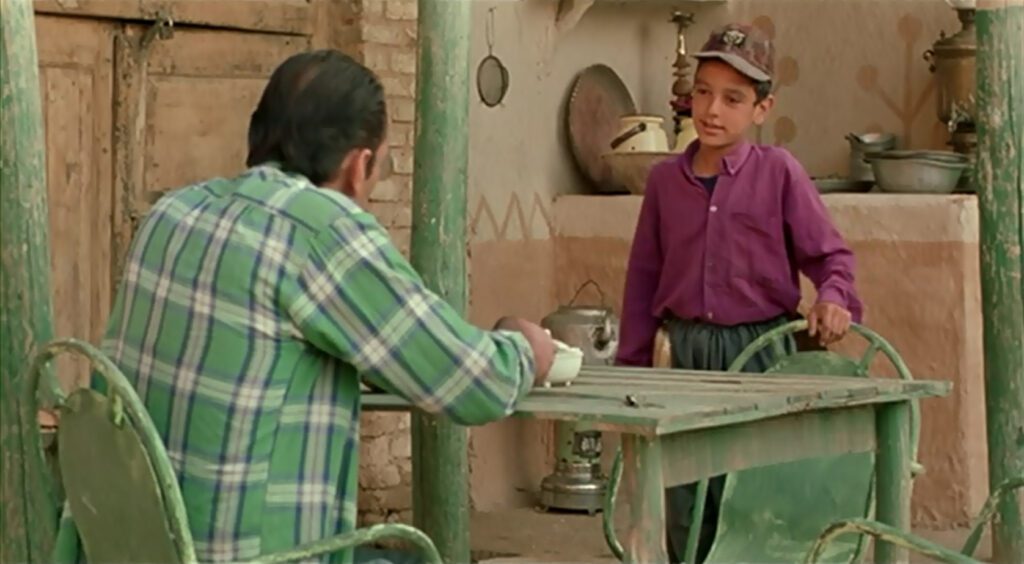
The Wind Will Carry Us
1999, directed by Abbas Kiarostami
Until the end of The Wind Will Carry Us it’s a mystery what exactly Behzad is doing in Siah Dareh, and even then the answer is not satisfying. Posing as a telecommunications engineer, he and three colleagues have apparently been sent from Tehran to this mountain village in western Iran on a strange and apparently trivial mission to document the local mourning ritual, prompted by a tip that a 100 year old woman is about to die. Their only confidant in the village is a boy named Farzad, who is told to keep their purpose a secret. Meanwhile their superior, Mrs. Godarzi, repeatedly calls Behzad to check on the status of their assignment. They wait at least two weeks, and three of them give up and go home.
Why is this task so important that Mrs. Godarzi sends four men on a long journey, only to violate common etiquette, lie to their hosts, and waste weeks of their time for nothing but eight photographs of women in a funeral parade? Non-Iranian viewers might be tempted to shrug their shoulders and chalk up the mystery to unknown cultural factors – an exotic enigma. It probably never occurs to foreign viewers that they, more than Iranians, might be the intended audience, but Abbas Kiarostami was already popular worldwide, and he surely knew the film would find a large audience outside Iran. Kiarostami would soon become an international director, making movies in Africa, Europe, and Japan, and his co-producer on this movie, Marin Karmitz, is French.
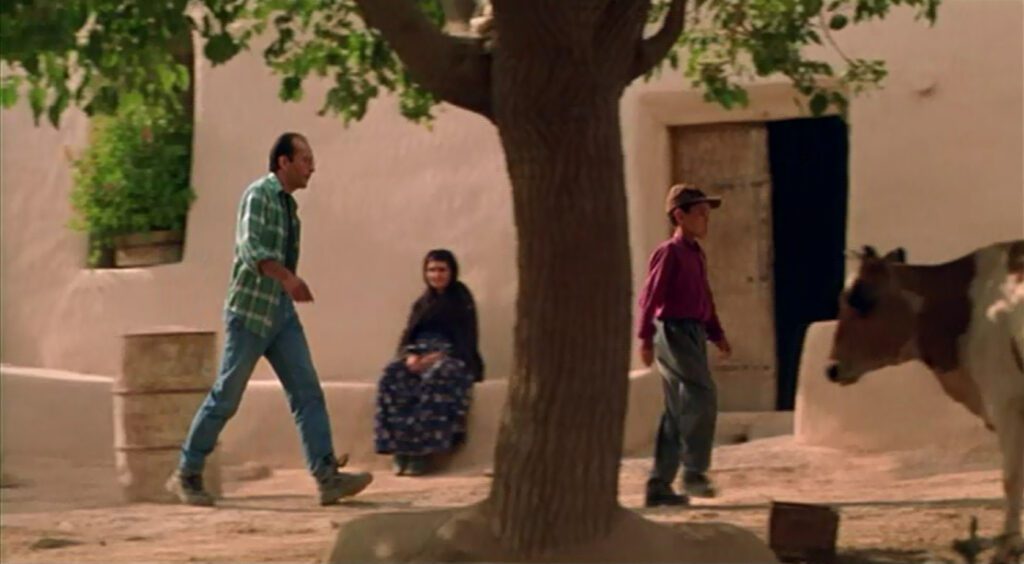
Therefore when the four visitors stop for the first time on the road into the village, asking directions from a woman harvesting grain, it is not necessarily amiss to read into the image of the robed figure holding a sickle the Western trope of the Grim Reaper. This is only the first of numerous allusions to death. Arriving in the village, Behzad jokes to Farzad about the car “giving up the ghost”, repeating the phrase twice to be sure the boy understands him, and repeating it six more times in a later conversation by the school.
The whole movie, in fact, is filled with signs of death. Five times Behzad’s mobile phone rings and he drives up to the cemetery to get a clear signal. After the first call a ditch digger gives him a freshly excavated human bone, which Behzad throws in a stream at the end. This floating bone, a symbol of death, is the movie’s final image. On Behzad’s last trip to the cemetery the ditch caves in, nearly becoming a grave. One of Farzad’s exam questions is about Judgment Day when all the living and dead come together. Behzad discusses death with a doctor, and he learns of a death in his own family. During a bad mood he flips over a turtle (which recovers when Behzad leaves). The plot itself is built around the death of Mrs. Malek.
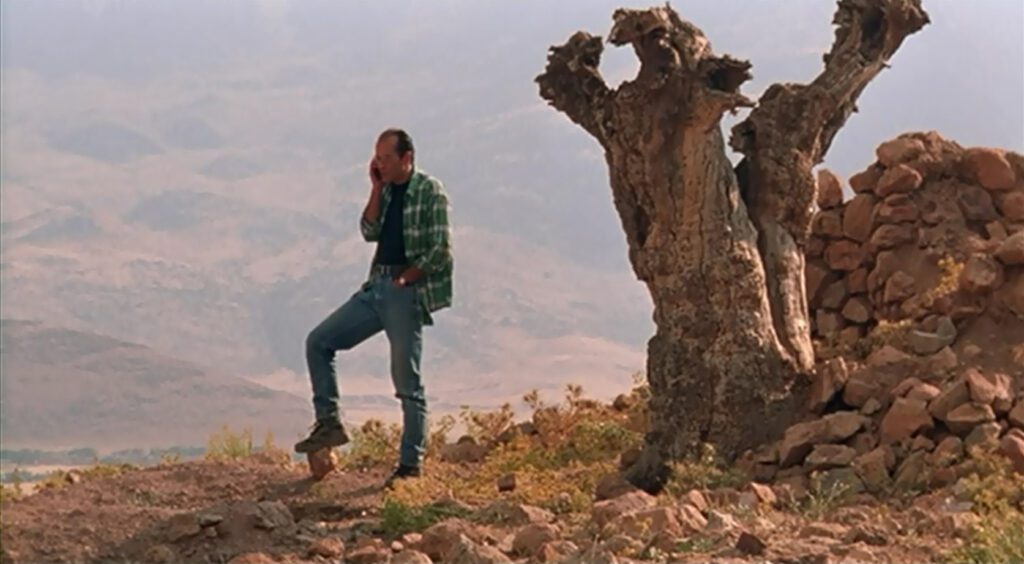
When seen this way, the movie reflects the Iranian theocracy’s fanatical obsession with death, rooted in Shia Islam’s emphasis on the eagerly awaited return of the Twelfth Imam on Judgment Day. Since the Iranian Revolution in 1979 the country’s elected government has been subordinate to a hard-line clerical Supreme Leader whose rule has been like an apocalyptic death cult, especially during the Iran-Iraq War from 1980-1988 when waves of Iranian men and boys were sent to be “martyred” for a holy cause.
In this context, Behzad, the only visible character from Tehran, a man with a strange and pointless obsession with death, represents the ruling authorities in his encounter with the villagers. Though not entirely unsympathetic, he behaves capriciously and autocratically. He corrects Farzad’s pronunciation, supplies answers for the boy’s exam, and scolds the boy for saying too much. Instead of aiding the ditch digger when the hole caves in, he drives around ordering strangers to rescue the man. He lies to his hosts, conducts photographic surveillance, and displays an obscene lack of sympathy toward the dying Mrs. Malek, whom he never visits personally. He pretends to be an engineer, someone who constructs things to improve people’s lives, when in fact he is only there to watch over people and record their activities. In all these actions and behaviors he’s analogous to the nation’s ruling clerics.
Like a devout Muslim praying five times daily, Behzad ascends a hill five times to communicate with his unseen superior. If the movie is aimed at a Western audience, it may not be coincidental that his boss’s name, Godarzi, starts with the English word “God”. He argues with her like a scriptural prophet arguing with God, and the cemetery on the hill is like a Mount Sinai, a conduit between the real and spiritual worlds.
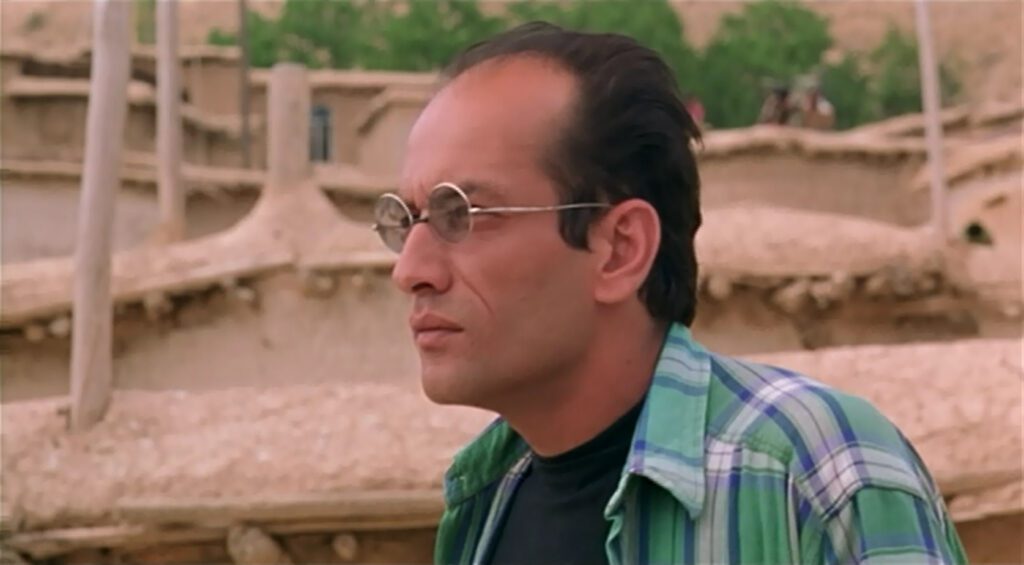
All the allusions to death fit a pattern. Most occur outside the village – in the cemetery, on the road into town, on the edge of the settlement by the school, or near the road. The village itself, in contrast, is teeming with life. The woman across from Behzad’s balcony gives birth to her tenth child. An old man at the tea restaurant makes euphemistic jokes about sex. Cows and sheep bustle through the passageways, and a bull attempts to mount a cow. People carry on their daily activities, serving tea, teaching school, milking cows, caring for a baby. When Farzad first speaks of the village he speaks of his birth there. The only sign of mortality inside the village is Mrs. Malek’s death and funeral, but her extraordinary 100 years of age make her as much a symbol of life as an example of death.
The contrast must be deliberate. The obsession with death comes from outside the village, from Tehran, while the real Iranians, the villagers of Siah Dareh, are simply trying to live as best they can, working hard and staying close to nature while Behzad is idle and drives around in an automobile. This difference explains the tension between Behzad and Farzad when the boy doesn’t immediately understand the man asking him about “the invalid” or “the woman”. Farzad is not preoccupied with the impending death the way his visitor is.
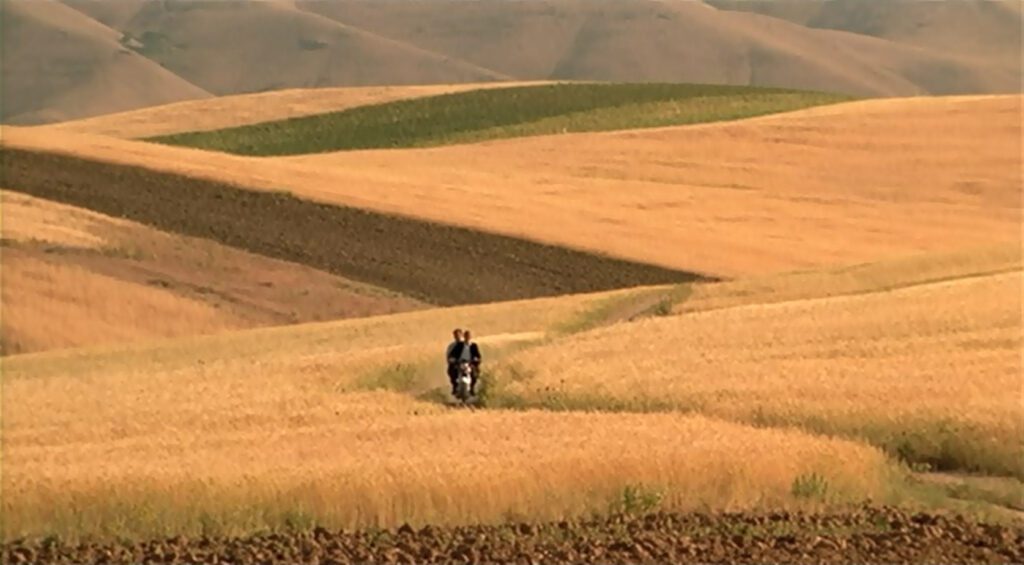
For an Iranian movie to characterize the governing clerics this way would risk censorship or worse if its meaning were not hidden in an allegory. However, if the movie is aimed at a foreign audience, its purpose is not so much to criticize the theocracy as to show the real Iran to the outside world. Despite stereotypes and news reports, the people of Iran do not share this fascination with death. They are good and ordinary human beings like people in any other country. At the village’s first appearance the men in the car describe it as a “treasure”, and although they don’t seem aware of their own meaning, the movie says that the Iranian people, rather than its leaders, are the real value of the country.
The movie does all this without propagandizing. We’re led to believe the villagers are a treasure not because they’re virtuous or heroic, but simply because of their ordinary vitality. Like anyone else they have their failings; for example Farzad’s mother and uncle stop speaking to each other, but later they are reconciled because of the old woman’s illness. Such touches make the villagers both believable and sympathetic.
The contrast between the villagers and the men from Tehran is reflected in another pattern. The movie differentiates consistently between high and low, but it reverses the normal hierarchy between them. In the landscapes that we see, everything high is devoid of life; the mountains and the cemetery are barren, while life flourishes in the fertile valleys. Yossef, the ditch digger, and his fiancée Zeynab, the milkmaid, both work in the depths, a hole in the ground and a cellar respectively. Behzad, on the other hand, takes a high position whenever he can, renting a room with a balcony, looking down on Mrs. Malek’s house from the rooftops, or going up the hill to the cemetery. Behzad calls attention to this reversal when he jokes with Farzad that on Judgment Day the good go to hell and the bad go to heaven, and Farzad doesn’t find the idea strange. Behzad corrects himself, but the joke mirrors the movie’s position that value and virtue tend to be found below, while people and things in high places lack merit.
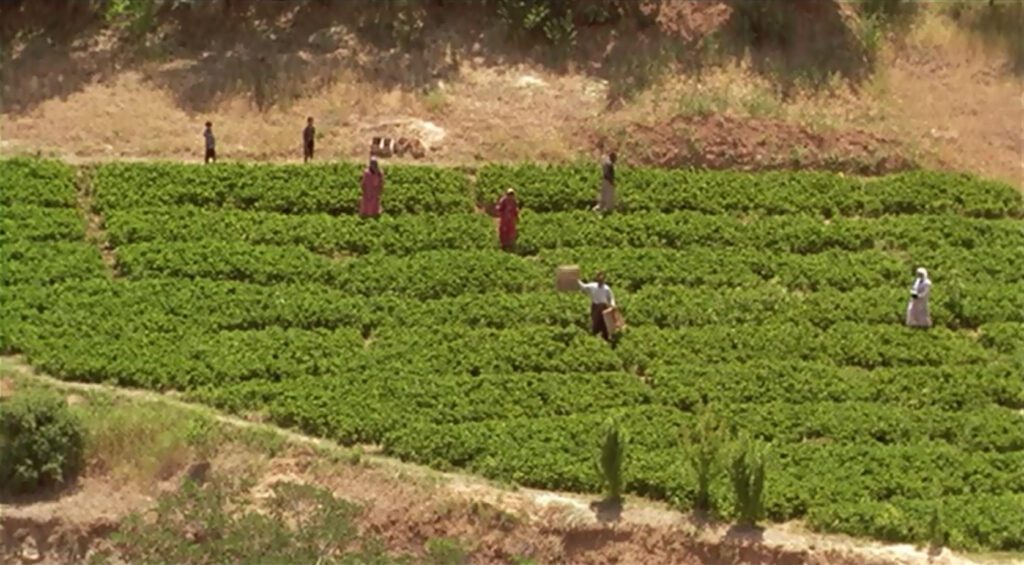
Another curious pattern is the astonishing number of characters hidden from view. We never see Mrs. Godarzi or Mrs. Malek, and we barely catch glimpses of Yossef, Zeynab, the woman carrying the haystacks, or Behzad’s three colleagues Keyvan, Ali, & Jahan. All these hidden people are fitting for a movie presenting Iran to the West. Looking from outside, we only know the country’s leadership through a figurehead, but in fact it’s a large unseen network. Likewise, but more importantly, from outside Iran we can only get a partial glimpse of Iran’s greatest asset, its common people.
CONNECTIONS:
Vampyr – Recurring images of death
I Walked with a Zombie – Reversal of assumed value between black & white or low & high
The Third Man – Systematic distinction between high & low; line of dialogue reversing positions of heaven and hell; recurring visits to a cemetery
Vivre sa vie – Reversal of connoted value in high and low
Andrei Rublev – Reversal of connoted value in high and low
Where Is My Friend’s Home? – Critique of Iranian clerical rulers
No Bears – Visitor from Tehran who seeks a high place for electronic reception; recording of ceremony; unexpected trouble over one or a few photographs; significant distinction between high & low; comment on vitality and death